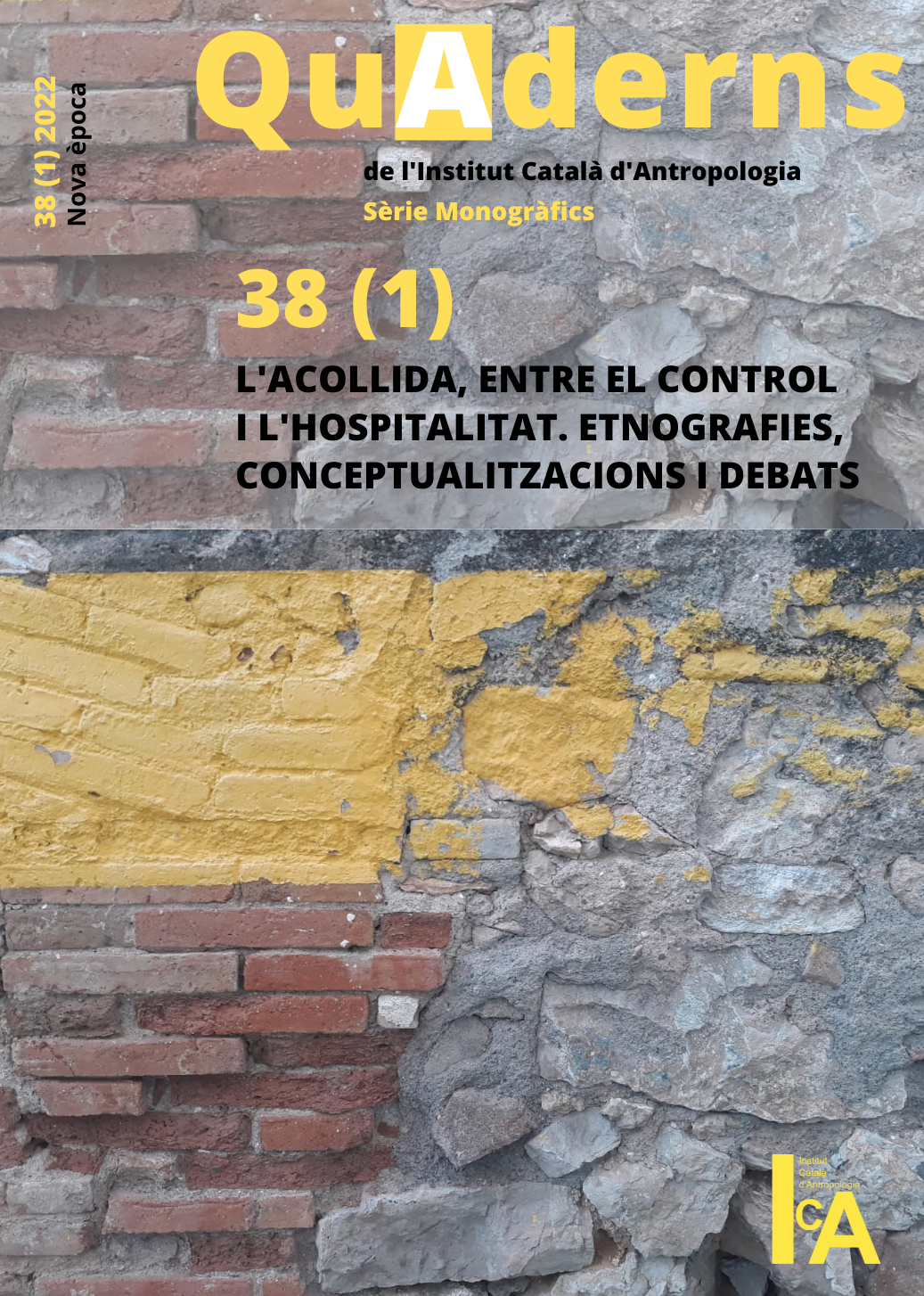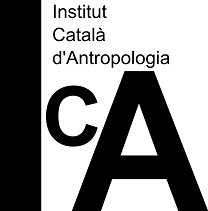“Acollim. Però com acollim?” L’acollida des del sistema estatal de protecció internacional a Espanya
DOI:
https://doi.org/10.56247/qua.393Paraules clau:
acollida, asil, recepció, ONG, treballadors/es d’acollidaResum
En el marc de l’asil, “l’acollida” és un concepte en disputa. Mentre a nivell de les institucions s’ha entès com una obligació legal derivada de la necessitat de protecció que s’assumeix de la persona refugiada, en altres contexts pot ser entesa com un imperatiu moral o com una forma d’acció política enfront el sistema global de control de les migracions. Si les polítiques “d’acollida” s’han convertit en una de les prerrogatives bàsiques del dret d’asil a la Unió Europea, la realitat sobre el terreny mostra una cara ben diferent. Els sol·licitants d’asil s’enfronten a situacions de desprotecció a la majoria de països membres, incloent situacions de carrer, extrema pobresa i greus vulneracions de drets bàsics. A Espanya, “l’acollida” està estretament lligada al sistema públic de recepció, com també ho està la desprotecció de les persones sol·licitants d’asil i refugiades. Aquest article explora com aquesta idea de “l’acollida” s’ha articulat en el cas d’Espanya a través d’una aproximació etnogràfica a l’experiència de les treballadores de les organitzacions no governamentals que gestionen el programa estatal recepció d’asil i refugi.
Descàrregues
Global Statistics ℹ️
|
450
Views
|
249
Downloads
|
|
699
Total
|
|
Referències
Agier, M. (2011). Managing the undesirables. Polity.
Agier, M. (2016). L’hospitalité aujourd’hui. College de France.
Amnesty International. (2016). Un sistema de acogida poco acogedor. Amnesty International.
Cabot, H. (2019). The business of anthropology and the European refugee regime. American Ethnologist, 46(3), 261-275. DOI: https://doi.org/10.1111/amet.12791
Caponio, T., Ponzo, I. Giannetto, L. (2019). Comparative report on the multilevel governance of the national asylum seekers’ reception systems. CEASEVAL Research on the Common European Asylum System, 24.
Christie, A. (2003). Unsettling the “social” in social work: responses to asylum seeking children in Ireland. Child & Family Social Work, 8(3), 223-231. DOI: https://doi.org/10.1046/j.1365-2206.2003.00287.x
Comisión Española de Ayuda al Refugiado. (2020). Informe 2020: Las personas refugiadas en España y Europa. CEAR.
Comisión Española de Ayuda al Refugiado. (2019) Informe 2019. Las personas refugiadas en España y Europa. CEAR: Madrid.
d’Hallouin-Mabillot, E. (2012). Les épreuves de l’asile. École d’Hautes Etudes en Sciencies Sociales.
Darling, J. (2016). Privatising asylum: neoliberalisation, depoliticisation and the governance of forced migration. Transactions of the Institute of British Geographers, 41(3), 230-243. https://doi.org/10.1111/tran.12118 DOI: https://doi.org/10.1111/tran.12118
Davies, T., Isakjee, A. i Dhesi, S. (2017). Violent Inaction: The Necropolitical Experience of Refugees in Europe. Antipode, 49(5), 1263-1284. https://doi.org/10.1111/anti.12325 DOI: https://doi.org/10.1111/anti.12325
De Genova, N., Garelli, G. i Tazzioli, M. (2018). Autonomy of Asylum?: The Autonomy of Migration Undoing the Refugee Crisis Script. South Atlantic Quarterly, 117(2), 239- 265. https://doi.org/10.1215/00382876-4374823 DOI: https://doi.org/10.1215/00382876-4374823
Directive 2013/33/EU of the European Parliament and of the Council of 26 June 2013 laying down standards for the reception of applicants for international protection.
Estrada Villaseñor, C., Iglesias Martínez, J., Urrutia, G., Buades, J. i Vicente, T. (2018). ¿Acoger sin integrar? Asociación Claver.
Fassin, D. (2009). Les économies morales revisitées. Annales. Historie, Sciences Sociales, 64, 1237-1266. DOI: https://doi.org/10.1017/S0395264900027499
Fassin, D. (2011). Violence, Truth and the Politics of the Body. Social Research, 78(2), 281-298. DOI: https://doi.org/10.1353/sor.2011.0018
Fassin, D. (2013). The Precarious Truth of Asylum. Public Culture, 25(1 69), 39-63. https://doi.org/10.1215/08992363-1890459 DOI: https://doi.org/10.1215/08992363-1890459
Fassin, D. (2015). Vista de La economía moral del asilo. Reflexiones críticas sobre la «crisis de los refugiados» de 2015 en Europa. Revista de Dialectología y Tradiciones Populares, LXX(julio-diciembre 2015), 277-290.Foucault, M. (1976). Vigilar y castigar: nacimiento de la prisión . Siglo Veintiuno Editores. DOI: https://doi.org/10.3989/rdtp.2015.02.001.02
Garcés-Mascareñas, B. (2019). Ser o no ser: deficiencias del sistema estatal de acogida. Notes Internacionals CIDOB, 214, 1-5.
Garcés-Mascareñas, B. i Pasetti, F. (2019). ¿A más solicitudes de asilo igual recepción? El sistema de acogida en España desde 2015. Anuario CIDOB de La Inmigración 2019, (November), 114-126. https://doi.org/DOI:doi.org/10.24241/Anuario-CIDOBInmi.2019.114 DOI: https://doi.org/10.24241/AnuarioCIDOBInmi.2019.114
Harrell-Bond, B. (1986). Imposing aid : Emergency assistance to refugees. Oxford medical publications.
Hayes, D. i Humphries, B. (2004). Social Work, Immigration and Asylum. London: Jessica Kingsley Publishers.
Humphris, R. i Sigona, N. (2019). Outsourcing the ‘best interests’ of unaccompanied asylum-seeking children in the era of austerity. Journal of Ethnic and Migration Studies, 45(2), 312-330. DOI: https://doi.org/10.1080/1369183X.2017.1404266
Iglesias Martínez, J. i Estrada, C. (2018). ¿Birds of passage? La integración social de la población refugiada en España. Revista Iberoamericana de Estudios de Desarrollo, 7(1), 144-167. DOI: https://doi.org/10.26754/ojs_ried/ijds.279
Iglesias Martínez, J., Rua, A. i Ares, A. (2020). Un arraigo sobre el alambre. La integración social de la población de origen inmigrante en España. Fundación Foessa.
Isin, E. F. (2008). Theorizing acts of citizenship. Dins Isin, Engin F. and Nielsen, Greg M. (eds.) Acts of Citizenship. London, UK: Palgrave Macmillan, pp. 15-43.
Jubany, O. (2011). Constructing truths in a culture of disbelief: Understanding asylum screening from within. International Sociology, 26(1), 74-94. DOI: https://doi.org/10.1177/0268580910380978
Jubany, O. (2017). Screening Asylum in a Culture of Disbelief: Truths, Denials and Skeptical Borders. Palgrave Macmillan. DOI: https://doi.org/10.1007/978-3-319-40748-7
Jubany, O. i Rué, A. (2020). The [dis]order of the Spanish asylum reception system. In O. Sacramento, E. Challinor, & P. G. Silva (Eds.), Quest for Refuge. Reception responses from the Global North (pp. 149-170). Húmus.
Kobelinsky, C. (2008). « Faire sortir les déboutés ». Gestion, contrôle et expulsion dans les centres pour demandeurs d’asile en France. Cultures & Conflits, 71(71), 113-130. DOI: https://doi.org/10.4000/conflits.15973
Kritzman-Amir, T. (2011). Privatization and Delegation of State Authority in Asylum Systems. Law & Ethics of Human Rights, 5(6), 194-215. DOI: https://doi.org/10.2202/1938-2545.1057
Ley 12/2009, de 30 de octubre, reguladora del derecho de asilo y de la protección subsidiaria. Boletín Oficial de Estado (BOE) núm. 263, de 31/10/2009, Madrid, España.
Levy, C. (2010). Refugees, Europe, camps/state of exception: “Into the zone”, the European Union and extraterritorial processing of migrants, refugees, and asylum-seekers (theories and practice). Refugee Survey Quarterly, 29(1), 92-119. DOI: https://doi.org/10.1093/rsq/hdq013
Malkki, L. H. (1996). In The News Speechless Emissaries : Refugees , Humanitarianism, and Dehistoricization. African Affair, 11(3), 377-404. DOI: https://doi.org/10.1525/can.1996.11.3.02a00050
Masocha, S. (2015). Construction of the ‘other’ in social workers’ discourses of asylum seekers. Journal of Social Work, 15(6), 569-585. DOI: https://doi.org/10.1177/1468017314549502
Mountz, A. (2010). Seeking asylum: Human smuggling and bureaucracy at the border. Minneapolis: University of Minnsesota Press. ISBN:978-0-8166-6537-2 (Cloth). DOI: https://doi.org/10.5749/minnesota/9780816665372.001.0001
Peutz, N. i De Genova, N. (2010). The Deportation Regime. Sovereignty, Space and the Freedom of Movement. Durham & London: Duke University Press. DOI: https://doi.org/10.1215/9780822391340
Puggioni, R. (2016). Rethinking International Protection. The Sovereign, the State and the Refugee. Palgrave macmillan. DOI: https://doi.org/10.1057/978-1-137-48310-2_6
Redfield, P. (2005). Doctors, borders, and life in crisis. Cultural Anthropology. John Wiley & Sons, Ltd. DOI: https://doi.org/10.1525/can.2005.20.3.328
Sandalio, R. N. (2018). Life after trauma: the mental-health needs of asylum seekers in Europe. Migration Policy Institute.
Schuster, L. (2011). Turning refugees into “illegal migrants”: Afghan asylum seekers in Europe. Ethnic and Racial Studies, 34(8), 1392-1407. DOI: https://doi.org/10.1080/01419870.2010.535550
Schuster, L. i Solomos, J. (2002). Rights and wrongs across European borders: Migrants, minorities and citizenship. Citizenship Studies, 6(1), 37-54. DOI: https://doi.org/10.1080/13621020220118740
Scott, J. C. (1998). Seeing Like a State. Yale University Press.
Descàrregues
Publicades
Com citar
Número
Secció
Llicència
(CC BY-NC-SA 4.0)




